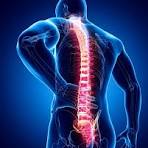A compound spine fracture, also known as an open fracture, is a serious medical condition where a bone in the spine breaks and pierces through the skin. This type of injury is typically more severe than closed fractures and often requires urgent medical attention. Understanding the causes, symptoms, and treatment options for compound spine fractures is crucial for both prevention and recovery.
Causes of Compound Spine Fractures
Compound spine fractures can result from various traumatic events, including:
- High-impact accidents: Car collisions, falls from significant heights, and severe sports injuries are common causes.
- Direct trauma: Blows to the back or neck, often seen in violent incidents, can result in such fractures.
- Osteoporosis: This condition weakens bones, making them more susceptible to fractures from relatively minor incidents.
- Pathological conditions: Diseases like cancer that weaken the bone structure can also lead to fractures.
Symptoms to Watch For
Recognizing the symptoms of a compound spine fracture is critical for seeking timely medical intervention. Common symptoms include:
- Severe pain: Intense and localized pain at the fracture site is a primary symptom.
- Visible deformity: The broken bone protruding through the skin is a clear indication.
- Swelling and bruising: The affected area often swells and becomes bruised.
- Numbness or paralysis: Depending on the fracture’s location, it can impact the spinal cord, leading to numbness, tingling, or paralysis in parts of the body.
- Difficulty moving: Restricted or painful movement is a common symptom, often accompanied by muscle spasms.
Diagnosis and Treatment
A thorough diagnosis usually involves:
- Physical examination: Initial assessment by a medical professional to check for visible signs and symptoms.
- Imaging tests: X-rays, CT scans, and MRI scans help determine the extent of the fracture and any associated injuries.
Treatment options depend on the severity and specific characteristics of the fracture:
- Emergency care: Immediate medical attention is crucial to prevent infection and further complications. This often includes stabilizing the patient and administering pain relief.
- Surgical intervention: Surgery is typically required to clean the wound, realign the bones, and stabilize the spine. Techniques such as spinal fusion, where vertebrae are fused together, or the insertion of metal rods and screws, may be used.
- Post-surgical care: This includes physical therapy to restore mobility and strength, as well as pain management strategies.
- Rehabilitation: Long-term rehabilitation is often necessary, involving a combination of physical therapy, occupational therapy, and sometimes psychological support to help the patient adjust and recover.
Preventive Measures
While not all compound spine fractures can be prevented, certain measures can reduce the risk:
- Safety measures: Wearing seatbelts, using protective sports gear, and taking precautions to prevent falls can help.
- Bone health: Maintaining good bone health through a balanced diet rich in calcium and vitamin D, along with regular exercise, can strengthen bones.
- Regular check-ups: For individuals with conditions like osteoporosis, regular medical check-ups and appropriate medication can help manage bone health.
Compound spine fractures are severe injuries that require immediate medical attention and a comprehensive treatment plan. Understanding the causes, symptoms, and treatment options can help in managing such injuries effectively and improving the chances of a successful recovery. Prioritizing safety and bone health can also play a significant role in preventing these serious fractures.
If you are are looking to see a Physiotherapist or Registered Massage Therapist. Contact the professionals and The Durham Orthopedic & Sports Injury Clinic and start your road to recovery today!


